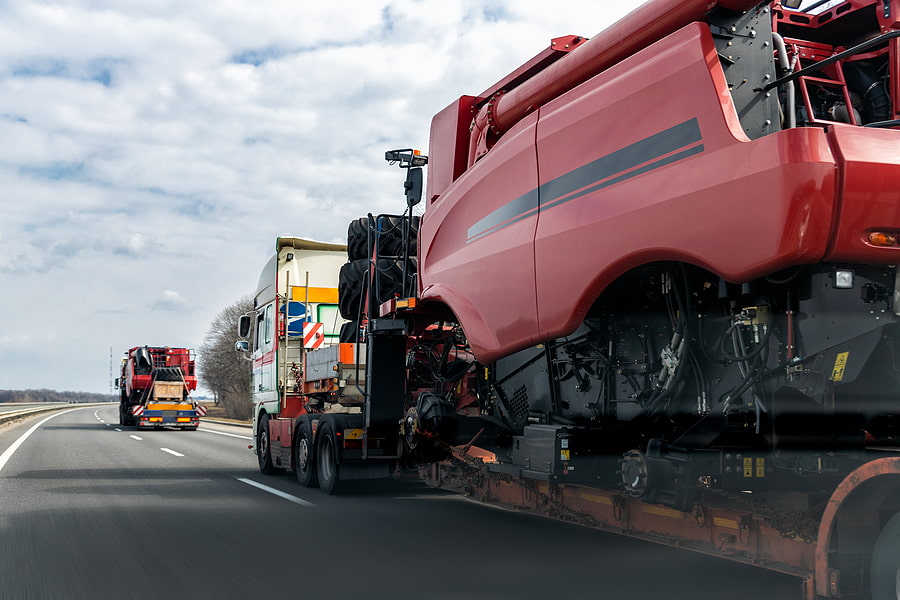Truck accidents happen daily across the U.S. Many involve large trucks, but even small trucks pose a higher risk than compact vehicles, contributing to severe accidents and injuries. According to the U.S. Department of Transportation’s Fatality Analysis Reporting System (FARS), 4,119 people died in crashes involving large trucks alone in one recent year, and thousands of other accidents involving trucks of all sizes occur regularly.
Trucks’ increased mass and weight make them more difficult to control and require more time to bring the vehicle to a complete stop. Additionally, some trucks carry hazardous materials that put motorists and others at risk in an accident. You need to understand different trucks and the specific risks they pose.
Semi-Trucks and Tractor-Trailers
Semi-trucks and tractor-trailers are among the country’s largest and most common trucks. Semi-trucks may travel without a trailer attached, while tractor-trailers incorporate both components. The cab and engine serve as the “tractor,” while the trailer attaches to the back to transport certain materials and goods.
Because of the size, weight, and nature of their design, semi-trucks are dangerous, particularly when attached to a trailer. They require more time to slow down and stop on the road and need plenty of space between vehicles in front of them and behind them.
Adverse weather conditions such as rain, snow, and ice can increase the risk of an accident involving a semi-truck or 18-wheeler, causing drivers to lose control as the truck loses traction. The trailer may also experience an imbalance that could cause the entire rig to topple over and hit other nearby vehicles, people, or property.
In addition, drivers of large trucks experience several blind spots that may prevent them from seeing nearby vehicles, pedestrians, or hazards. The general rule when driving near trucks is that if you cannot see the driver in their side-view mirrors, they can’t see you.
Box Trucks
Box trucks closely resemble tractor-trailers, as they have a “tractor” portion consisting of the cab and engine, along with a cargo box. However, unlike semi-trucks and tractor-trailers, box trucks comprise one whole unit, eliminating the ability to detach the cargo box.
Box trucks include rental trucks that transport belongings when people move and delivery trucks that transport goods and materials. Although they’re somewhat smaller than semi-trucks and tractor-trailers, they still experience serious blind spots that make it hard for drivers to spot risks. They also frequently operate on narrower roads that are more difficult to navigate with a truck.
Tanker Trucks
Tanker trucks are trucks designed to transport a variety of liquids and gases, including gasoline, liquid nitrogen, and natural gas. These trucks can be as big as other tractor-trailers as they carry large tankers. These trucks have the same potential risks as large tractor-trailers but with an added potential for damages and injuries resulting from the hazardous chemicals.
Garbage Trucks
Garbage trucks generally take up less space on the road than tractor-trailers and other large trucks, but they still pose certain risks. Garbage trucks often feature an open back that could lead to garbage falling out of the back and filling the roads with debris. Workers may also ride on the exterior of these trucks between stops. To help avoid the potential dangers of garbage trucks, other motorists should give these trucks ample room when behind them to significantly reduce the risk of an accident.
Flatbed Trucks
Flatbed trucks rely on a flatbed trailer to carry a variety of oversized and oddly shaped cargo that won’t fit into a traditional tractor-trailer. The trailers for these vehicles can be as long as tractor-trailers, but the majority of them are around 48 feet.
You may also spot articulated or rigid flatbeds. While articulated flatbeds use a hitch to attach trailers and allow them to pivot, rigid trucks are similar to box trucks in that the trailer connects directly to the cab.
Flatbed trucks transport huge loads that ordinarily aren’t suitable for the road. Businesses and truckers obtain special permits for these loads if they need to transport them in certain situations.
These oversized loads are hazardous to surrounding motorists and others, requiring more than one lane to travel. They can dislodge in poor weather conditions, and their mass can result in catastrophic accidents and injuries when they collide with vehicles or pedestrians. To mitigate these risks, motorists should maintain their distance from flatbed trucks, just as they would with any other large truck.
Emergency Vehicles
Fire trucks and other emergency vehicles need plenty of space on the road to respond efficiently to emergencies. Drivers should always get out of the way upon seeing flashing lights and upon hearing emergency sirens.
Fire trucks require more room than police cars and other compact emergency vehicles. These vehicles often travel at high speeds to get to a fire in time, and large crews may travel in them along with heavy equipment. They also essentially function as tanker trucks as they carry a backup water supply. These factors contribute to accidents if motorists don’t practice caution.
Consult a Truck Accident Lawyer After a Collision
These and other types of trucks can cause serious injuries and fatalities when involved in an accident. If you or a loved one sustain injuries and other damages in a truck accident and believe a truck driver or another party was at fault, you may file an accident claim with the help of an attorney. To find out if you have a case, consider speaking with a truck accident lawyer to discuss your options. Contact us for a free consultation.


